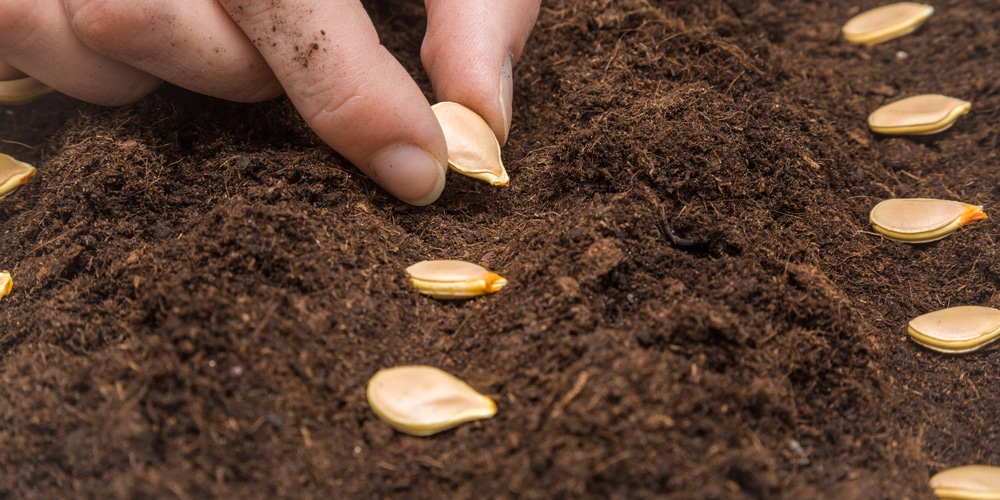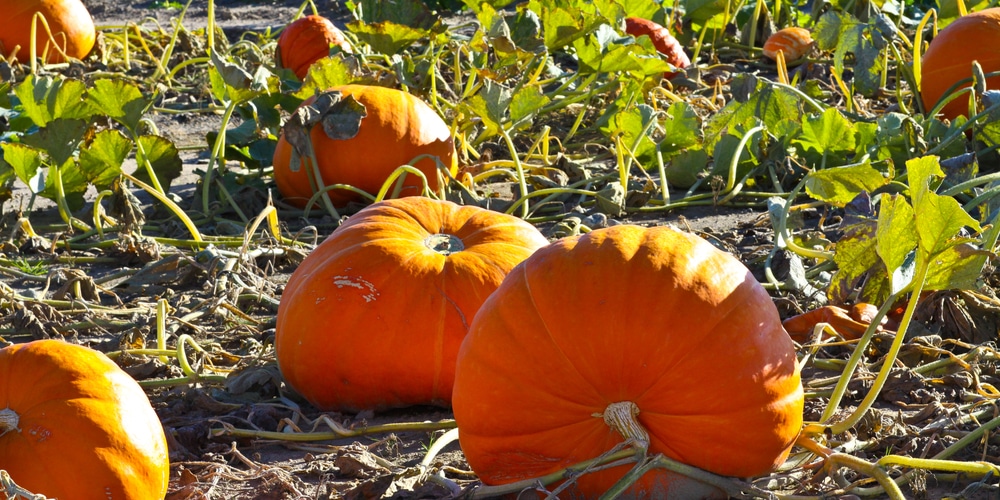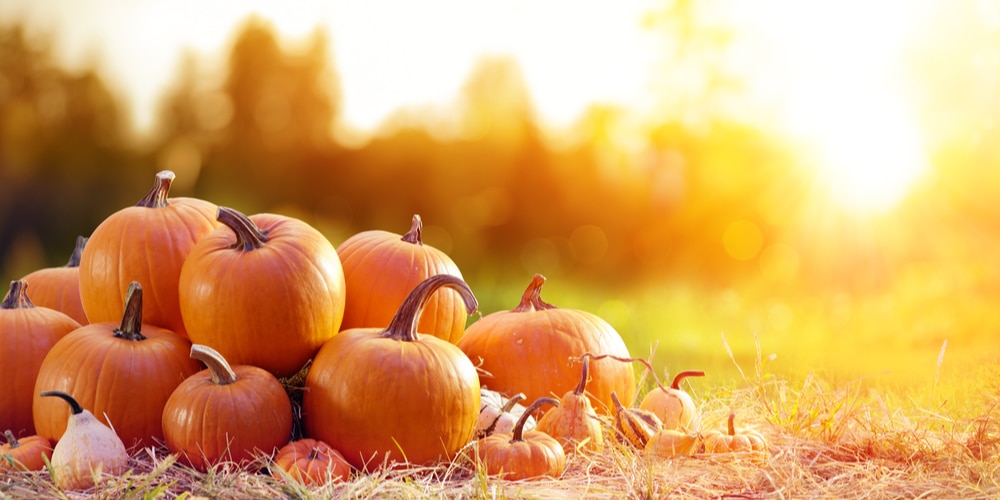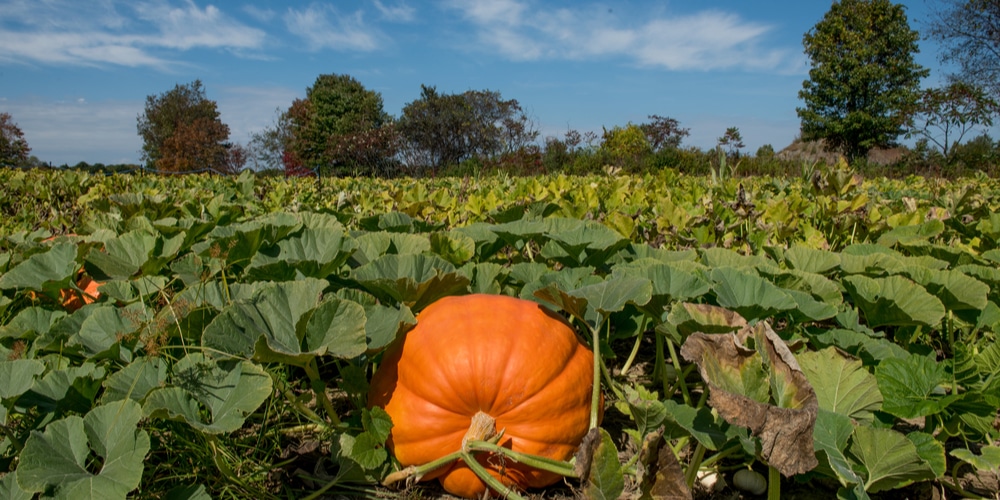A Guide to Planting and Growing Pumpkins
Pumpkins are seasonal fall vegetables that can be used to make a pie or carved into a Jack-o-lantern. Pumpkins are also very healthy as they are an excellent source of nutrition. You can eat the pumpkins, seeds, and flesh.
If you’re a fan of pumpkins recipes, you may be planning to grow a pumpkin patch in your yard. Let’s look at when to plant pumpkins and how to harvest and store these tasty vegetables.
When to plant pumpkins

Pumpkins love the hot weather and grow best throughout the summer months. This means that you’ll need to plant your pumpkin seeds later than most other vegetables. Don’t plant pumpkin seeds outside until the temperatures have heated up and the soil is warm enough for germination. If you plant pumpkins in the spring, you’ll risk them dying of cold. It’s best to plant your pumpkin seeds in early June, which will mean they’ll be ready to harvest in fall.
Most varieties of pumpkins grow over a longer period, as their growing season is longer than most vegetables (which can affect their weight). If you live in a cooler climate and the soil won’t be warm enough to encourage plant growth throughout the entire growing season, you may like to start your pumpkins off in pots indoors. The seedlings can then be transplanted when the soil has warmed up. If you’re starting your pumpkins off inside, you can plant the seeds in May.
Where to plant pumpkins

If you’re considering growing pumpkins, you’ll need to first think about where to plant them. Pumpkins take up a large area and have vines that spread, so you’ll need to ensure you have enough space to grow the vegetables. The vines can grow to over 20 feet in length, depending on the pumpkin’s variety and climate.
If you aren’t lucky enough to have a large garden, you can still grow a smaller variety such as Jack Be Little’s. The downside with this variety is that they aren’t edible but are great for making Halloween lanterns. Sugar pumpkins take up less space and small, and can be consumed. They get their name due to their natural, tasty flesh, which is sweet and isn’t stringy.
Pumpkins are vegetables that love the heat and grow best in a warm or even hot climate. You’ll need to plant your pumpkin seeds in a warm, sunny spot. Always read the seed packet before planting, as this will tell you how much space your pumpkins require and when to plant them. Planting times and spacing varies for different species.
To increase yield, you may like to try planting your pumpkin seeds on little hills of dirt so that they are slightly raised off the soil. These humps will warm up quickly in the sun and help your pumpkins thrive. Planting on hills will help with drainage and will mean that the vines can flow downward.
Tips for growing pumpkins
It’s a good idea to lift pumpkin vines from the ground using supports as they grow longer. This stops the vines from becoming rotten. It also helps to promote the coloring of the fruit. If you prefer, you can also rotate the fruit once a week, which will allow the pumpkins to color evenly. Rotating the fruit will also ensure it grows into a good shape and that the bottoms don’t start to rot. You can also put a piece of cardboard underneath your pumpkins to stop them from decaying as they ripen.
Be very careful when you handle the pumpkins vines as they are very delicate. If you damage the vines, you’ll reduce crop yield as well as fruit quality. It’s also a wise idea to nip off the ends of vines once a few pumpkins have started to grow. This will allow the plant to focus its energy on growing the fruit rather than growing longer vines. Here are all the pumpkin growth stages in detail, if you’re a pumpkin growing rookie.
Don’t use insecticides when growing pumpkins, as this could kill bees. Pumpkins require bees to pollinate the flowers and encourage the growth of the fruit. Many types of insecticides kill off bees. You can also attempt to attract bees to your yard by investing in a bee house and positioning it near your pumpkin patch.
Harvesting Pumpkins
Your pumpkins will reach maturity and be ready to harvest after a few months. To check whether a pumpkin is ready to pick, feel the rind to see that they have hardened. You can also look at the pumpkin’s color to see if it’s ready to harvest.
You’ll need to harvest your pumpkin crop when the weather starts to get colder. Ensure they are all harvested and stored before the first frost to avoid damaging the pumpkins. You can use pruning shears to cut each pumpkin from its vine.
The history of the pumpkin
Pumpkins are available in different varieties and are members of the gourd family. These healthy fall vegetables get their name from the Greek word “peopon,” which means large melon. They have been cultivated since about 3,500 BC and enjoyed for generations.
Pumpkins and squash are native to southwest America, Mexico, and South America. They are also grown in many other countries worldwide and have become popular in cooking sweet and savory dishes. In the past Native American tribes have used strips of dried pumpkin to make woven mats.
Christopher Columbus was responsible for bringing pumpkin seeds to Europe from America while exploring the New World. Although pumpkins were very popular in America, they never really caught on in Europe due to the colder climate, which made growing the seeds to maturity challenging.
Conclusion
Pumpkins are a tasty fall vegetable that makes a great addition to your garden whether you plan to eat your pumpkins or make lanterns. Plant your pumpkin seeds in early June so that they’ll be ready to harvest in the fall.
You can also get your pumpkin seeds started slightly earlier indoors so that they’ll be ready to transplant outside in June. This will give the seedlings a head start and is great if you live in a cooler climate and are worried your fruits won’t have time to mature before the weather gets colder.

